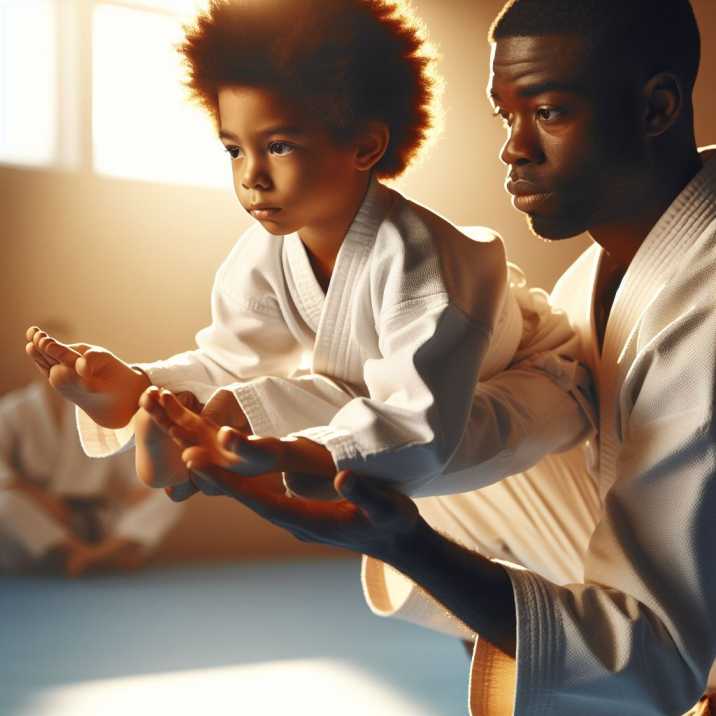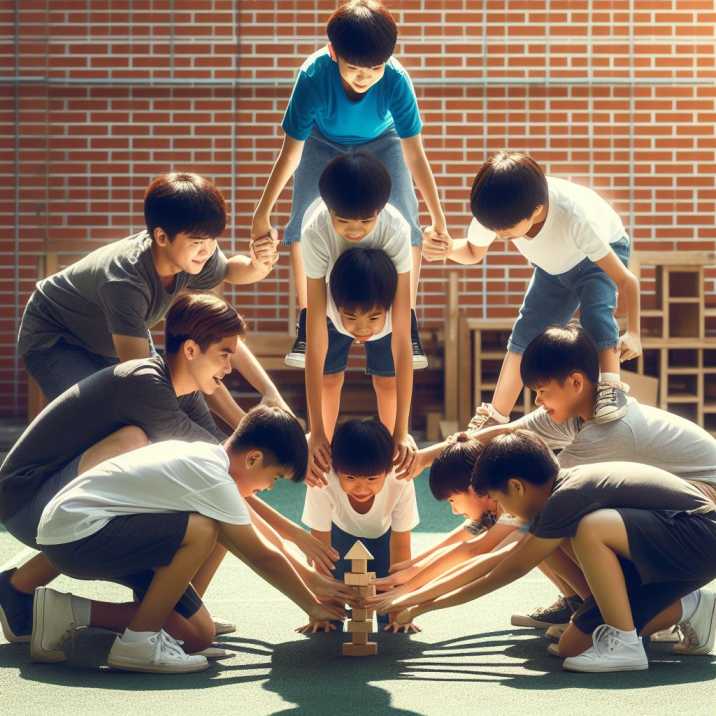Introduction:
Table of Contents
In a world that constantly bombards children with distractions, maintaining focus can be a challenge, especially for kids with hyperactivity or ADHD. Balancing exercises offer a unique and engaging way to enhance concentration and coordination. In this comprehensive guide, we’ll explore various balancing exercises for kids with hyperactivity or ADHD, providing valuable insights and practical tips.

The Importance of Balancing Exercises for Kids with Hyperactivity or ADHD:
Balancing exercises play a crucial role in developing a child’s motor skills and enhancing overall physical and mental well-being. These exercises help kids with hyperactivity or ADHD by promoting stability and focus. Engaging in regular balancing drills can contribute to improved attention span and self-regulation.
Understanding Hyperactivity and ADHD:
Before delving into balancing exercises, it’s essential to understand hyperactivity and ADHD. Attention Deficit Hyperactivity Disorder (ADHD) is a neurodevelopmental disorder that affects both children and adults. Kids with ADHD often struggle with impulse control, attention, and hyperactivity. Balancing activities can serve as effective tools to manage these challenges.
Fun and Interactive Balancing Games:
To make balancing exercises enjoyable for kids, incorporating interactive games is key. Games like “Balance Beam Adventure” and “Obstacle Course Challenge” not only enhance coordination but also make the learning process exciting. These activities promote engagement and create positive associations with balance training.
Incorporating Martial Arts Techniques:
Martial arts offer a unique blend of discipline and physical activity. Integrating martial arts techniques into balancing exercises can be particularly beneficial for kids with hyperactivity or ADHD. Moves like stances and controlled kicks not only enhance balance but also instill focus and self-discipline.

Tips for Parents and Instructors:
For parents and instructors guiding kids through balancing exercises, it’s crucial to be patient and encouraging. Offering positive reinforcement, setting achievable goals, and creating a supportive environment can significantly impact a child’s success in these activities. Consistency is key, and celebrating small victories goes a long way.
Yoga and Mindfulness for Balance:
Yoga and mindfulness techniques contribute to both physical and mental well-being. Integrating simple yoga poses and mindfulness exercises into balancing routines can help children with hyperactivity or ADHD develop a sense of calmness and focus. Breathing exercises, in particular, aid in self-regulation.
The Role of Nutrition in Supporting Focus:
A balanced diet plays a vital role in supporting cognitive functions. Including foods rich in omega-3 fatty acids, antioxidants, and essential vitamins can positively impact a child’s ability to concentrate. Exploring nutritional aspects alongside balancing exercises creates a holistic approach to managing hyperactivity and ADHD.
Balancing Exercises at School and Home:
Balancing drills should not be limited to a specific setting. Discussing strategies for implementing these exercises both at school and home ensures consistent support for children with hyperactivity or ADHD. Simple activities like seated balance exercises or using stability balls can be seamlessly integrated into daily routines.
The Science Behind Balancing:
Understanding the science behind balancing exercises adds depth to their effectiveness. Exploring concepts such as proprioception and vestibular system stimulation sheds light on how these activities impact the brain and contribute to improved focus and coordination.
Encouraging Peer Involvement:
Social interaction is an integral part of a child’s development. Encouraging peer involvement in balancing exercises not only makes the activities more enjoyable but also fosters a sense of community. Group activities create a supportive environment where children can learn from each other and celebrate progress together.

Conclusion:
In conclusion, balancing exercises for kids with hyperactivity or ADHD offer a multifaceted approach to improving focus and coordination. By incorporating fun games, martial arts techniques, yoga, and mindfulness practices, parents and instructors can provide valuable support for children facing challenges related to attention and hyperactivity. Remember, the journey toward better balance is not just physical; it’s a holistic approach that positively influences a child’s overall well-being.
FAQs: Balancing Exercises for Kids with Hyperactivity or ADHD
- Q: How often should my child engage in balancing exercises?
- A: It’s recommended to incorporate balancing exercises into your child’s routine at least three to four times a week. Consistency is key to experiencing the benefits over time.
- Q: Can balancing exercises be done at home without any specialized equipment?
- A: Absolutely! Many balancing exercises can be performed using simple household items like cushions, stability balls, or even a designated balance beam made from a low, secure surface.
- Q: Are there specific balancing activities suitable for children with varying levels of hyperactivity or ADHD?
- A: Yes, the beauty of balancing exercises is their adaptability. Tailor activities based on your child’s comfort level and gradually increase difficulty as they progress.
- Q: How can I motivate my child to participate in balancing exercises?
- A: Make it fun! Incorporate games, challenges, or involve friends and family. Positive reinforcement, praise, and celebrating small achievements can also boost motivation.
- Q: Are there any safety considerations for balancing exercises, especially for kids with hyperactivity?
- A: Safety is paramount. Ensure that the environment is free from hazards, and supervise your child during exercises. Start with simple activities and progress cautiously based on your child’s abilities.
- Q: Can these exercises be beneficial for kids without hyperactivity or ADHD?
- A: Absolutely. Balancing exercises promote overall physical and mental well-being. They are beneficial for all children, aiding in the development of motor skills, coordination, and focus.
- Q: Is there an ideal age to start incorporating balancing exercises for children?
- A: Balancing exercises can be introduced as early as preschool age. However, the key is to adapt activities based on the child’s developmental stage and gradually increase complexity over time.
- Q: How long does it take to see improvements in focus and coordination through balancing exercises?
- A: The timeline varies for each child. Some may show improvements within a few weeks, while others may take a bit longer. Consistency and patience are crucial for long-term benefits.


